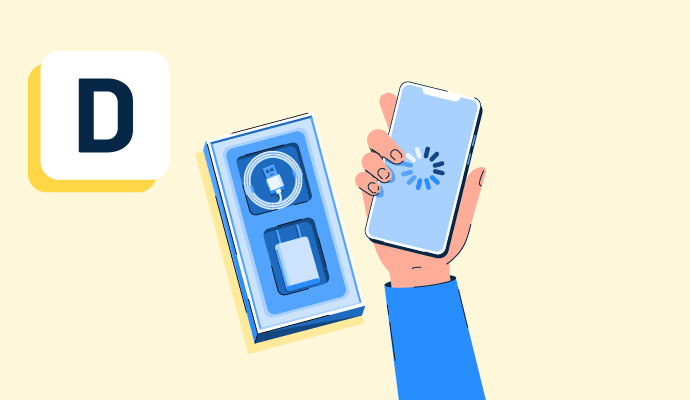What is device enrollment?
Device enrollment is the first step in a multi-stage process for organizations to manage and optimize mobile equipment within a business.
For many companies, the type of device enrollment depends on the individual piece of equipment being used, the network or software it runs on, and the software the company has, to organize all of the devices under their control.
Mobile device management (MDM) software is typically used to support device enrollment and management. With this software, businesses can assign users to individual devices, apply user-specific functions, and, if necessary, erase the content of devices.
Types of device enrollment
While Apple, Microsoft, Chrome, and other device platforms all come with their own rules around how a device can be enrolled into an MDM, the most common types of device enrollment can be broken into three distinct categories:
- User enrollment: When a user owns their device and brings it to an organization, rather than being supplied with a device by the business, this can still be enrolled within the company’s MDM. Common uses for this type of enrollment are an individual adding their business emails to their smartphone.
- Individual device enrollment: When enrolled in the business's MDM using company-supplied devices, an administrator will control users' permissions and the apps they need to complete their work. They can remotely erase data if the user leaves the business. Personal information like notes, messages, or calendars is generally hidden in the MDM to give the user privacy on their work device.
- Automated device enrollment: Some MDMs have options for automatic enrollment into the software when the business owns the device. For instance, a smartphone and tablet purchased for a new employee may be automatically registered and enrolled when purchased and before they’re given to the employee during onboarding.
Basic elements of device enrollment
The information given to an MDM during device enrollment will depend on the individual device added to the software. In most cases, device enrollment into an MDM will include data on the following:
- Device capacity and storage: Admins can see how much space a device has left in its memory and make storage changes or upgrades as needed.
- Apps installed on the device: While admins may be unable to see what a user is doing with these apps, they can access a list of which apps have been installed on each device.
- Model and the serial number of the device: Data about the device itself is essential to register during device enrollment for better organization and tracking of company-held devices.
- Device operating system. Each device will work differently based on the system they run on. Knowing this information allows admins to work with the user to find tools that support them and their daily tasks.
- Device contact number: This is particularly important if the device is a smartphone, as the business is likely paying for this phone line.
Benefits of device enrollment
The goal of device enrollment is to make managing all devices under a business easier for identity and access management, ensuring users have access to everything they need to complete their work tasks. It also:
- Gives admins greater control: Securing business data should be a top priority for the IT team. Enrolling devices in an MDM enables admins to check for any possible data breaches and monitor for prohibited app downloads on a device.
- Simplifies employee onboarding: When bringing in new team members, enrollment means that any devices the individual needs can be set up ahead of time more quickly and easily. Many companies like Microsoft and Apple have automated device enrollment that skips steps needed during manual enrollment, saving even more time.
- Adds security through mass automation: In a company with many employees, rolling out updates on every device manually can be time consuming. It’s also easy to miss something when working to scale. With automated device enrollment, businesses can apply changes to any device in the MDM during a single update.
Device enrollment best practices
The exact process for enrolling a device in an MDM will depend on the device and the software it uses. To make device enrollment more successful, admins should:
- Have a good understanding of devices and systems in the business: It’s essential for the IT team to know what operating systems and devices the company currently has, along with what they plan to use in the near future. This organizes the MDM more efficiently.
- Review apps needed for each device: Not every device will be compatible with the apps required for each user. Before onboarding a new team member or distributing new devices, admins should test necessary apps used in day-to-day work.
- Remember to add devices to inventory and asset management systems: Controlling what’s on a device is one thing. But it’s also important to add these devices to any asset tracking tools being used during the device’s enrollment. This keeps all reporting accurate and prevents internal asset loss.
- Implement company-wide usage policies: Before enrolling any new device, the business should put together policies regarding what is permitted and prohibited for individuals and device types. This could include data usage limits, banned apps, and any business security compliance requirements.
Give employees the tools they need to succeed and effectively manage company property with IT asset management software.

Holly Landis
Holly Landis is a freelance writer for G2. She also specializes in being a digital marketing consultant, focusing in on-page SEO, copy, and content writing. She works with SMEs and creative businesses that want to be more intentional with their digital strategies and grow organically on channels they own. As a Brit now living in the USA, you'll usually find her drinking copious amounts of tea in her cherished Anne Boleyn mug while watching endless reruns of Parks and Rec.

















